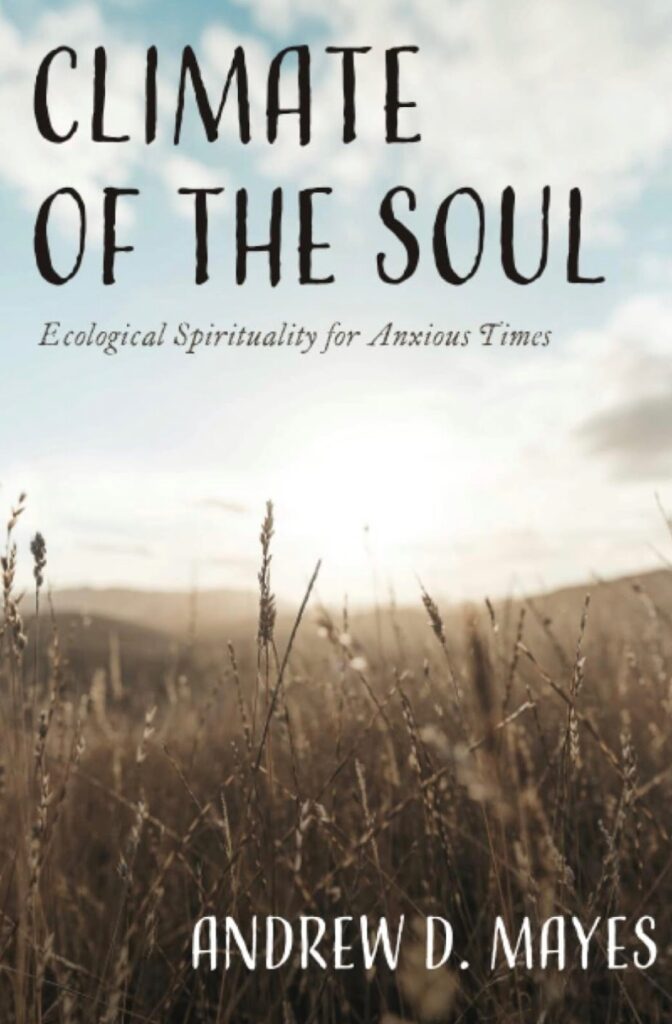
Former Chichester diocesan spirituality adviser Canon Andrew Mayes, who has worked in the Holy Land, draws us into marrying our experience with what the Bible says and how saints through the ages have interpreted its relevance here and now, in regard to climate change. I was drawn in his new book to recurrent references to Elijah whose call in 1 Kings 19, associated with drought and the anticipation of rain, is seen as a pointer to Christ and Christian discipleship. ‘Elijah’s waiting in the silence leads to speech and action. Prayer that listens to God with attentiveness can thus become transformative, changing and reshaping our priorities and plans’. Climate of the Soul is a good read and outward looking in its encouragement of prayer and action addressing the climate crisis.
‘What would the world be, once bereft of wet and of wildness? Let them be left, O let them be left, wildness and wet; Long live the weeds and the wilderness yet’. So muses Gerard Manley Hopkins in a poem affirming the spiritual significance of climate which can be seen to image the soul’s exposure to God. In his latest book Andrew Mayes redresses inattention to biblical and traditional use, like that of Hopkins, of meteorological imagery to describe the workings of God and the soul. It is a timely exploration as climate change becomes a given of 21st century life.
The author tours scripture with the weather and the seasons in mind as well as the spiritual wisdom of the saints. Andrew Mayes has worked in the Holy Land and is able to help his readers envisage the land there. As a well seasoned spiritual director he is able to draw us into marrying our experience with what the Bible says and how saints through the ages have interpreted its relevance here and now. I was drawn to his recurrent references to Elijah whose call in 1 Kings 19, associated with drought and the anticipation of rain, is seen as a pointer to Christ and Christian discipleship. ‘Elijah’s waiting in the silence leads to speech and action. Prayer that listens to God with attentiveness can thus become transformative, changing and reshaping our priorities and plans. Jesus models for us this balance between the mystical and the prophetic, between silence and speaking, between action and contemplation… The greatest challenge is to bring a contemplative heart into the bustling centre of ministry. Jesus models not only the ebb and flow of prayer and action, but also the ability to maintain a listening heart in the very maelstrom of ministry.
The elements and seasons are essential to our climate both globally and in the invoking of spiritual wisdom. Dwelling on darkness John of the Cross presents the dark night of the soul as a time of creativity and healing. ‘Poet and mystic Evelyn Underhill (1875-1941) images the soul as a tulip bulb placed deep into the earth, as the soul is hidden with Christ in God (Col 3:3). “Go”“with him/ Into the dim.” It is in the dark that God gives the growth, until it is time to bud and blossom forth’ cf the grain of wheat in Christ’s prophecy in John 12:24 taken up in the Easter hymn “Now the green blade riseth from the buried grain”. Finding God in both light and darkness is a major strand in ‘Climate of the Soul’ especially in Fr Mayes’s reflection on the Transfiguration of Jesus where one ‘encounters God in both the light and the cloud. The light represents the kataphatic tradition of prayer – where affirmations and declarations about God are made confidently: Jesus is light; “his face shone like the sun”; “his garments became white as light.” But the cloud represents the apophatic tradition, where words give way to silence, where concepts about God dissolve into speechless wonder, where the unifying dense wet fog of the cloud shrouds the disciples and silences all attempts at talking. The reference to the overshadowing cloud evokes the theophany on Mount Sinai’. This reflection is followed at the end of the chapter with an invitation to capture the ‘apophatic’ mode by sitting in darkness to ponder longing for God and then light a candle, see light dispelling darkness and pray in the ‘kataphatic’ mode to be more lit up by the light of Christ so your life has more of a shine towards your neighbour.
‘Climate of the Soul’ is designed to be used by both individuals and groups. Questions at the end of each chapter are provided to stimulate personal reflection and group discussion. Three readerships are in mind. First, it is for Christians who are longing for movement and progress in their spiritual lives. Second, it is for those who support others on their spiritual journey: those who serve as spiritual directors, soul-friends or accompaniers. Third, it is for seekers, for those wanting to discover for themselves the astonishing riches of the Christian tradition’. It is a good, helpful read and outward looking in its encouragement of prayer and action that addresses the ongoing climate crisis. ‘Attentiveness to the ecology of the soul leads to a sharper perception of the environmental issues facing our planet. This book helps us to look differently at our turbulent world within the interplay of microcosm of soul and macrocosm of climate, celebrating a sacramental approach to the universe, to the elements, and to ourselves’.
Andrew D Mayes Climate of the Soul
Ecological Spirituality for Anxious Times
Resource Publications 2022 £15.75 ISBN-13 978-1666737134 158pp
Canon Dr John F Twisleton 7 August 2023


